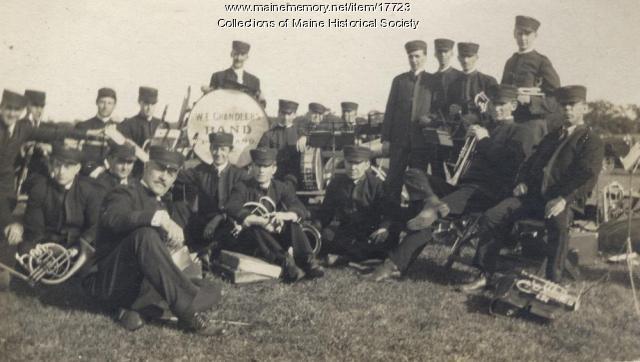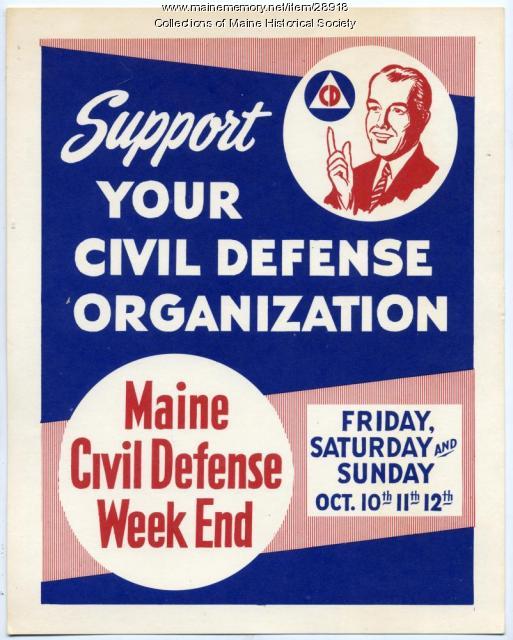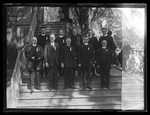Keywords: Somes
- Historical Items (1058)
- Tax Records (4)
- Architecture & Landscape (5)
- Online Exhibits (226)
- Site Pages (517)
- My Maine Stories (91)
- Lesson Plans (21)
Online Exhibits
Your results include these online exhibits. You also can view all of the site's exhibits, view a timeline of selected events in Maine History, and learn how to create your own exhibit. See featured exhibits or create your own exhibit
Exhibit
"Some music and dance traditions happen seasonally for harvesting, social, and ceremonial events. Other songs honor and welcome visitors or prepare…"
Exhibit
Liberty Threatened: Maine in 1775
At Lexington and Concord, on April 19, 1775, British troops attempted to destroy munitions stored by American colonists. The battles were the opening salvos of the American Revolution. Shortly, the conflict would erupt in Maine.
Exhibit
This collection of images portrays many buildings in Sanford and Springvale. The images were taken around the turn of the twentieth century.
Exhibit
May Baskets, a Dog, and a Party for Children
Two women thinking intruders were coming into their Biddeford Pool home, let the dog out to chase them away. Later, they discovered the truth about the noise at their door.
Exhibit
Art of the People: Folk Art in Maine
For many different reasons people saved and carefully preserved the objects in this exhibit. Eventually, along with the memories they hold, the objects were passed to the Maine Historical Society. Object and memory, serve as a powerful way to explore history and to connect to the lives of people in the past.
Exhibit
Before the era of recorded music and radio, nearly every community had a band that played at parades and other civic events. Fire departments had bands, military units had bands, theaters had bands. Band music was everywhere.
Exhibit
George W. Hinckley and Needy Boys and Girls
George W. Hinckley wanted to help needy boys. The farm, school and home he ran for nearly sixty nears near Fairfield stressed home, religion, education, discipline, industry, and recreation.
Exhibit
Prohibition in Maine in the 1920s
Federal Prohibition took hold of America in 1920 with the passing of the Volstead Act that banned the sale and consumption of all alcohol in the US. However, Maine had the Temperance movement long before anyone was prohibited from taking part in one of America's most popular past times. Starting in 1851, the struggles between the "drys" and the "wets" of Maine lasted for 82 years, a period of time that was everything but dry and rife with nothing but illegal activity.
Exhibit
Elise Fellows White: Music, Writing, and Family
From a violin prodigy in her early years to an older woman -- mother of two -- struggling financially, Skowhegan native Mary Elise Fellows White remained committed to music, writing, poetry, her extended family -- and living a life that would matter and be remembered.
Exhibit
Civil Defense: Fear and Safety
In the 1950s and the 1960s, Maine's Civil Defense effort focused on preparedness for hurricanes, floods and other natural disasters and a more global concern, nuclear war. Civil Defense materials urged awareness, along with measures like storing food and other staple items and preparing underground or other shelters.
Exhibit
The gunpowder mills at Gambo Falls in Windham and Gorham produced about a quarter of the gunpowder used by Union forces during the Civil War. The complex contained as many as 50 buildings.
Exhibit
In Canada During the Civil War
One surviving letter from the family of Francis Pratt to the young man who was in Canada in 1865 suggests that going to Canada to escape military service during the Civil War was not unheard of. The letter also suggests money was removed to Canada to protect it.
Exhibit
Rum, Riot, and Reform - Influential & Interesting Documents
"As a physician of some stature, he influenced a new generation of medical leaders. In his 1790 edition, he used this chart to illustrate the…"
Exhibit
Rum, Riot, and Reform - Reform and Repeal
"Though some individual towns would choose to remain dry, the Noble Experiment had ended for the state and nation. X Patrick and Marie Cyr, ca."
Exhibit
Public education has been a part of Maine since Euro-American settlement began to stabilize in the early eighteenth century. But not until the end of the nineteenth century was public education really compulsory in Maine.
Exhibit
Evergreens and a Jolly Old Elf
Santa Claus and evergreens have been common December additions to homes, schools, businesses, and other public places to America since the mid nineteenth century. They are two symbols of the Christian holiday of Christmas whose origins are unrelated to the religious meaning of the day.
Exhibit
In 1893, F.C. Whitehouse of Topsham, who owned paper mills in Topsham and Lisbon Falls, began construction of a third mill on the eastern banks of the Androscoggin River five miles north of Topsham. First, he had to build a dam to harness the river's power.
Exhibit
St-Jean-Baptiste Day -- June 24th -- in Lewiston-Auburn was a very public display of ethnic pride for nearly a century. Since about 1830, French Canadians had used St. John the Baptist's birthdate as a demonstration of French-Canadian nationalism.
Exhibit
J.A. Poor and the Portland-Montreal Connection
John A. Poor's determination in 1845 to bring rail service to Maine and to make Portland the winter port for Montreal, along with the steel foundry he started to build locomotives and many other products, helped boost the economy of Portland the state.
Exhibit
Anshe Sfard, Portland's Early Chassidic Congregation
Chassidic Jews who came to Portland from Eastern Europe formed a congregation in the late 19th century and, in 1917, built a synagogue -- Anshe Sfard -- on Cumberland Avenue in Portland. By the early 1960s, the congregation was largely gone. The building was demolished in 1983.
Exhibit
Elise Fellows White: World Traveling Violin Prodigy
Elise Fellows White was a violinist from Skowhegan who traveled all over the world to share her music.
Exhibit
Unlocking the Declaration's Secrets
Fewer than 30 copies of the first printing of the Declaration of Independence are known to exist. John Dunlap hurriedly printed copies for distribution to assemblies, conventions, committees and military officers. Authenticating authenticity of the document requires examination of numerous details of the broadside.
Exhibit
Informal family photos often include family pets -- but formal, studio portraits and paintings also often feature one person and one pet, in formal attire and pose.
Exhibit
"In some rural congregations, the Rabbi and cantor were the same person. The Zimel Brothers sing Chassidic Melodies, Portland, ca."
























